Nanogate Bundle
What's the Story Behind Nanogate's Transformation?
Journey back to the late 90s and discover the origins of Nanogate SWOT Analysis, a company that harnessed the power of nanotechnology. From its roots as a spin-off in Germany, Nanogate aimed to revolutionize materials science and product performance. This brief history explores the evolution of this innovative force in the industry.
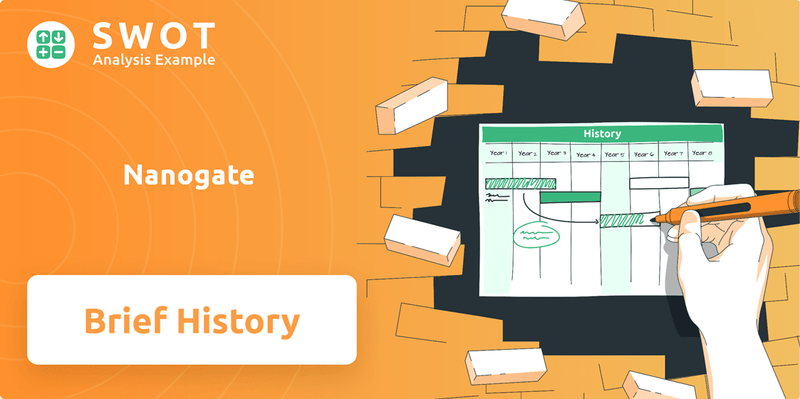
The Nanogate company story, now largely under Techniplas Nano Tec SE, is a compelling case study in innovation and adaptation. Understanding the Nanogate history provides valuable insights into the challenges and opportunities within the high-performance surfaces and components market. This company profile will examine its early innovations, strategic shifts, and how it navigated a dynamic business landscape, offering a glimpse into its current status and impact on the industry. The brief history of Nanogate AG reveals a fascinating timeline.
What is the Nanogate Founding Story?
The Nanogate company, a pioneer in applying nanotechnology, was established in 1999. Ralf-Michael Zastrau founded the company, originating from the Leibniz Institute for New Materials in Saarbrücken, Germany. This marked the beginning of a journey to transform materials through advanced chemical nanotechnology.
The core mission of the founders was to utilize nanotechnology to enhance the properties of materials and surfaces. They aimed to create products with improved functionality and aesthetics, targeting various industrial applications. Nanogate's early focus was on developing and applying proprietary technologies to create value-added products.
The initial business model involved direct sales and long-term partnerships to generate revenue. One of its early innovations was a glass coating based on a self-assembling process. The company's vision was to 'program' materials with new properties, such as scratch resistance and anti-bacterial qualities. This expertise allowed Nanogate to offer high-quality systems across industries, including automotive and consumer goods. Nanogate AG was listed on the Deutsche Börse in 2006.
Nanogate's journey began in 1999 as a spin-off from the Leibniz Institute.
- 1999: Founding of Nanogate by Ralf-Michael Zastrau.
- 2006: The company was listed on the Deutsche Börse.
- Early focus on glass coatings and surface enhancements.
- Expansion into automotive, consumer goods, and industrial applications.
Nanogate SWOT Analysis
- Complete SWOT Breakdown
- Fully Customizable
- Editable in Excel & Word
- Professional Formatting
- Investor-Ready Format
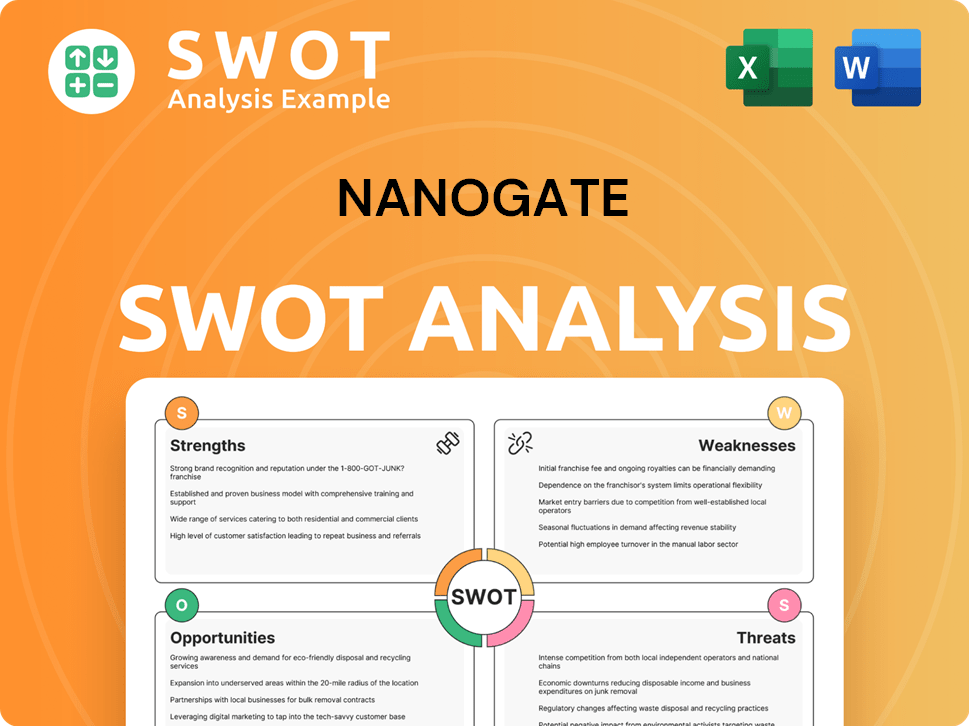
What Drove the Early Growth of Nanogate?
The early growth and expansion of the Nanogate company was marked by strategic moves to broaden its technology base and international presence. This phase involved both organic growth and a series of acquisitions. These efforts significantly boosted the company's capabilities and market reach, setting the stage for further development. To learn more about the company's core values, check out Mission, Vision & Core Values of Nanogate.
Nanogate accelerated its growth through strategic acquisitions. A significant step was the acquisition of a 75% stake in a company specializing in plastic component manufacturing in April 2016. The acquisition of Jay Plastics in January 2017 further strengthened its foothold in North America. These moves helped Nanogate create a vertically integrated business model.
Nanogate expanded its global presence by establishing subsidiaries in Turkey and the Middle East in 2016. The company focused on key sectors, including mobility, aviation, and medical applications. This strategic focus allowed Nanogate to target specific market segments and tailor its product development accordingly.
The company's workforce expanded significantly, reaching around 1,100 employees after the Jay Plastics acquisition in 2017, and later approximately 1,800. Revenue increased by about 15% to EUR 38.2 million in 2012, marking a record for the third consecutive year. By 2018, Nanogate's revenue had reached approximately €239 million.
Nanogate entered into strategic partnerships to advance its technological capabilities. The cooperation with Oerlikon Balzers in 2018 focused on ePD technology for metallizing plastic parts. These partnerships aimed to open new application areas and industrialize innovative coating solutions, enhancing Nanogate's competitive edge.
Nanogate PESTLE Analysis
- Covers All 6 PESTLE Categories
- No Research Needed – Save Hours of Work
- Built by Experts, Trusted by Consultants
- Instant Download, Ready to Use
- 100% Editable, Fully Customizable
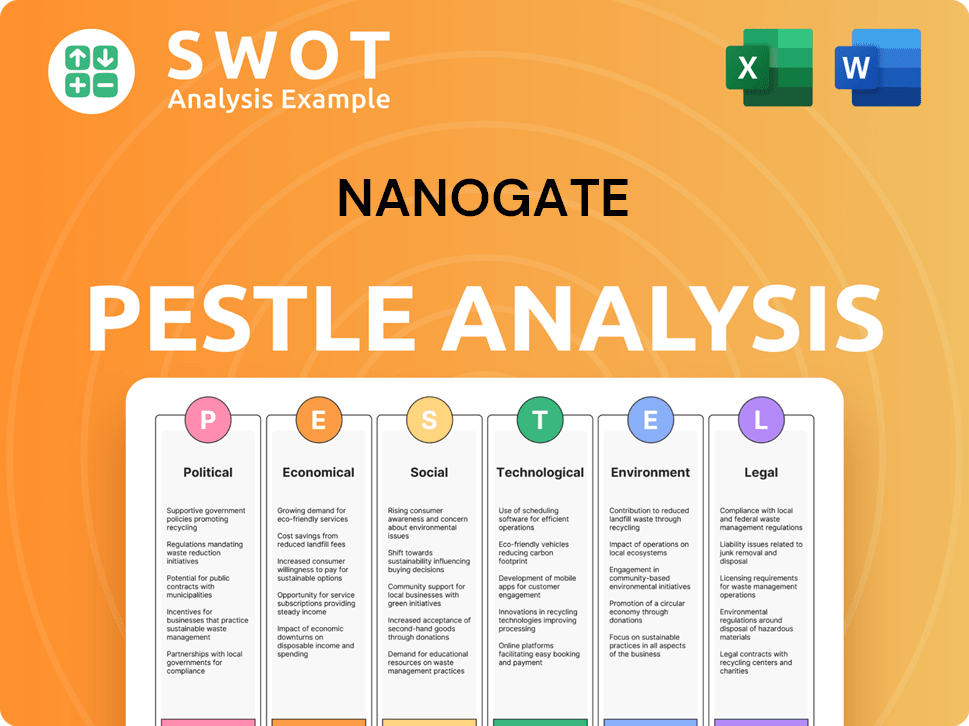
What are the key Milestones in Nanogate history?
The Nanogate company, a pioneer in nanotechnology, achieved several significant milestones throughout its history. These milestones highlight the company's growth, innovation, and impact on various industries.
| Year | Milestone |
|---|---|
| Early 2000s | Nanogate was founded, marking the beginning of its journey in nanotechnology. |
| 2010 | Nanogate and GfO introduced Sicralan AP®, a transparent, scratchproof coating with anti-fingerprint properties. |
| 2018 | Nanogate partnered with Oerlikon Balzers to industrialize ePD technology. |
| 2021 | Techniplas acquired Nanogate's core business, securing approximately 1,600 jobs. |
Nanogate's innovations were central to its business strategy. The company focused on developing high-performance surfaces and materials.
N-Glaze technology offered an integrated portfolio for designing, producing, and enhancing plastic components with glass-like properties. This innovation allowed for improved aesthetics and functionality in various applications.
The partnership with Oerlikon Balzers to industrialize ePD (embedded PVD for Design Parts) technology, an environmentally friendly method for metallizing plastic parts. This improved functional properties like light and radio transparency.
N-Metals Design technology focused on high-quality components with glossy, metallic surfaces. This was particularly relevant for automotive and consumer electronics.
In 2010, Nanogate and GfO introduced Sicralan AP®, a transparent, scratchproof coating with anti-fingerprint properties for stainless steel and plastics. This product enhanced the durability and appearance of surfaces.
Despite its technological advancements, Nanogate faced considerable challenges, particularly in scaling its operations and navigating market dynamics. These challenges ultimately led to significant restructuring.
By late 2019, the company acknowledged significant operating challenges, despite good market and customer positioning. This led to the implementation of the NXI Plus reorganization program.
In mid-2020, Nanogate SE filed for insolvency under self-administration (protective shield proceedings). The restructuring involved the sale of its core business and subsidiaries.
The core business, including key assets and investments in non-insolvent subsidiaries, was acquired by Techniplas in 2021. This acquisition helped secure approximately 1,600 jobs and allowed the continuation of Nanogate's technological expertise.
Nanogate Business Model Canvas
- Complete 9-Block Business Model Canvas
- Effortlessly Communicate Your Business Strategy
- Investor-Ready BMC Format
- 100% Editable and Customizable
- Clear and Structured Layout
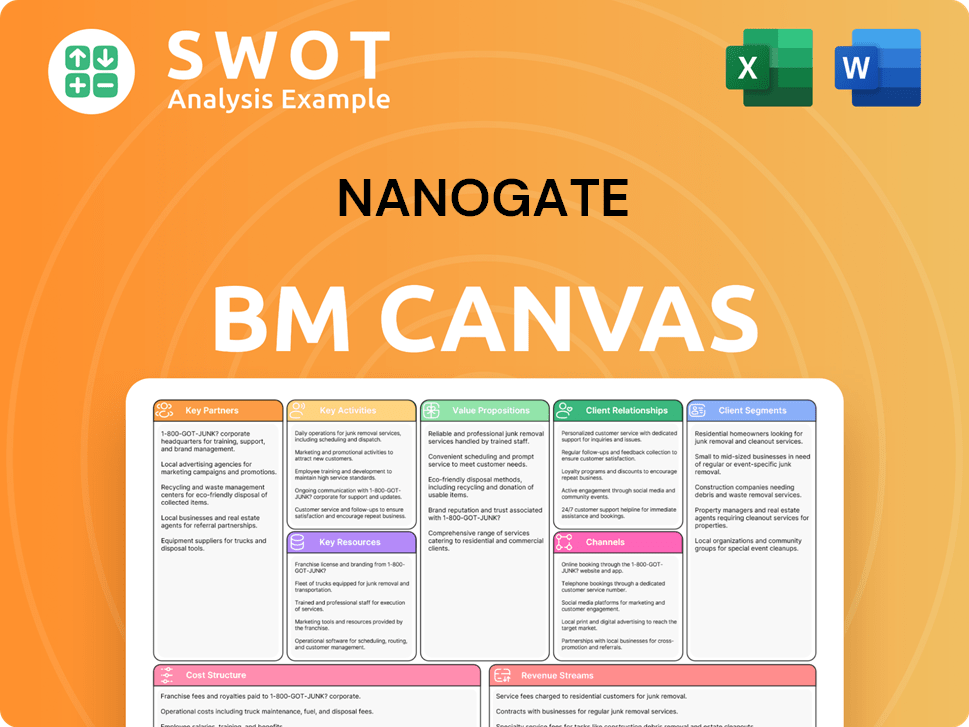
What is the Timeline of Key Events for Nanogate?
The Nanogate history showcases a journey of innovation and adaptation in the field of nanotechnology. From its inception as a spin-off to its eventual restructuring, the company navigated significant milestones and market shifts.
| Year | Key Event |
|---|---|
| 1999 | Nanogate founded as a spin-off from the Leibniz Institute for New Materials in Saarbrücken, Germany. |
| 2006 | Nanogate AG listed on the Deutsche Börse. |
| 2012 | Group sales increased by approximately 15% to EUR 38.2 million, reaching a new record high. |
| 2014 | Nanogate initiates its Phase 5 strategy, leading to a doubling of revenues by 2016. |
| April 2016 | Acquisition of a 75% stake in a company specializing in manufacturing and finishing design-oriented plastic components. |
| 2016 | Establishment of subsidiaries in Turkey and North America. |
| January 2017 | Acquisition of US-based Jay Plastics, strengthening presence in the US. |
| February 2018 | Cooperation with Oerlikon Balzers announced to further establish ePD technology for metallizing plastic parts. |
| July 2018 | Merger/Acquisition with Holzapfel Engineering Team. |
| Mid-2020 | Nanogate SE files for insolvency under self-administration. |
| May 2021 | Techniplas acquires major parts of Nanogate SE's business assets and subsidiaries. |
| February 2022 | Nanogate SE's listing on the Basic Board of Frankfurt Stock Exchange ends. |
The nanocoatings market, where Nanogate SE was a leading company, is projected to reach $17.22 billion in 2025. The compound annual growth rate (CAGR) is expected to be 24.7%, and grow to $40.37 billion by 2029. This signifies substantial growth potential for companies in this sector.
The nanomaterials market is forecast to grow rapidly, from $16.75 billion in 2024 to $19.16 billion in 2025. It's expected to reach $34.91 billion by 2029. This growth is fueled by demand for durable coatings and technological advancements.
Techniplas Nano Tec SE, the former core business of Nanogate, is expected to focus on high-performance surfaces and components. This is particularly for the automotive industry. It will continue to innovate in surface finishing, coating, and advanced plastic components.
The future of Techniplas Nano Tec SE will be influenced by industry trends. These include the increasing demand for advanced surface solutions. The integration within Techniplas is expected to generate additional profitable growth opportunities.
Nanogate Porter's Five Forces Analysis
- Covers All 5 Competitive Forces in Detail
- Structured for Consultants, Students, and Founders
- 100% Editable in Microsoft Word & Excel
- Instant Digital Download – Use Immediately
- Compatible with Mac & PC – Fully Unlocked
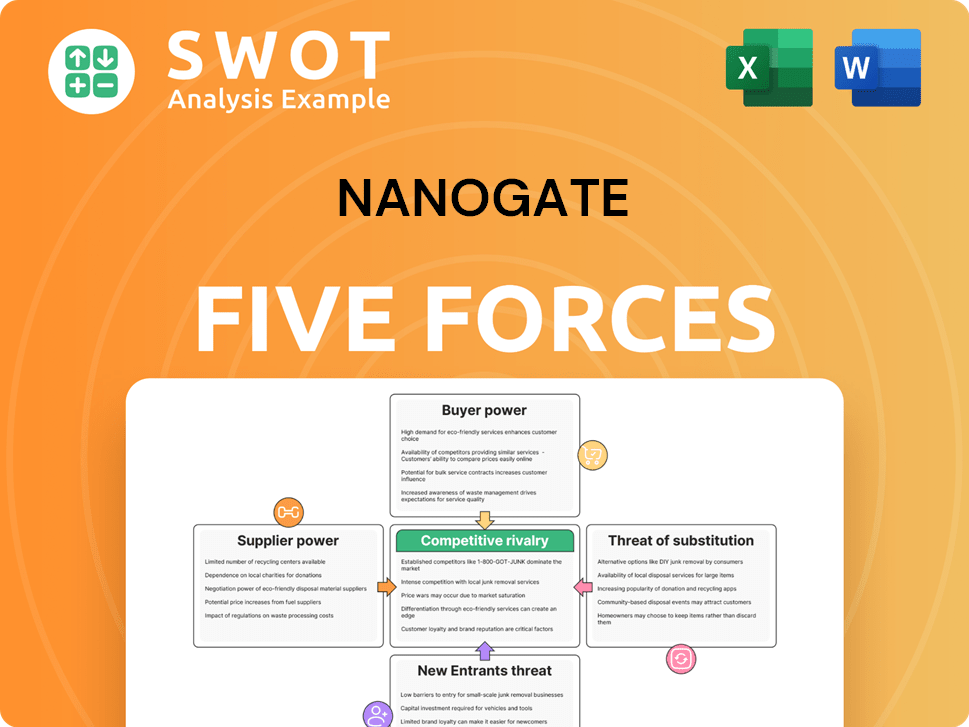
Related Blogs
- What is Competitive Landscape of Nanogate Company?
- What is Growth Strategy and Future Prospects of Nanogate Company?
- How Does Nanogate Company Work?
- What is Sales and Marketing Strategy of Nanogate Company?
- What is Brief History of Nanogate Company?
- Who Owns Nanogate Company?
- What is Customer Demographics and Target Market of Nanogate Company?
Disclaimer
All information, articles, and product details provided on this website are for general informational and educational purposes only. We do not claim any ownership over, nor do we intend to infringe upon, any trademarks, copyrights, logos, brand names, or other intellectual property mentioned or depicted on this site. Such intellectual property remains the property of its respective owners, and any references here are made solely for identification or informational purposes, without implying any affiliation, endorsement, or partnership.
We make no representations or warranties, express or implied, regarding the accuracy, completeness, or suitability of any content or products presented. Nothing on this website should be construed as legal, tax, investment, financial, medical, or other professional advice. In addition, no part of this site—including articles or product references—constitutes a solicitation, recommendation, endorsement, advertisement, or offer to buy or sell any securities, franchises, or other financial instruments, particularly in jurisdictions where such activity would be unlawful.
All content is of a general nature and may not address the specific circumstances of any individual or entity. It is not a substitute for professional advice or services. Any actions you take based on the information provided here are strictly at your own risk. You accept full responsibility for any decisions or outcomes arising from your use of this website and agree to release us from any liability in connection with your use of, or reliance upon, the content or products found herein.